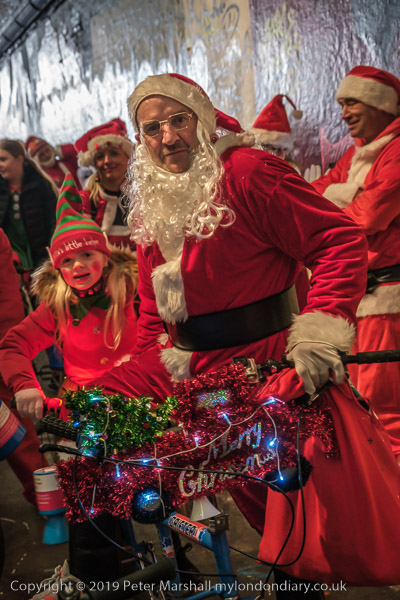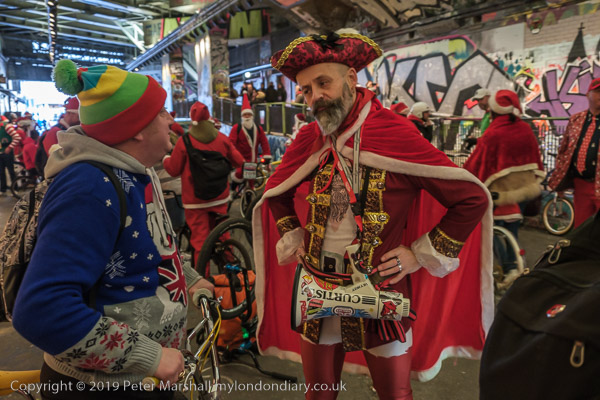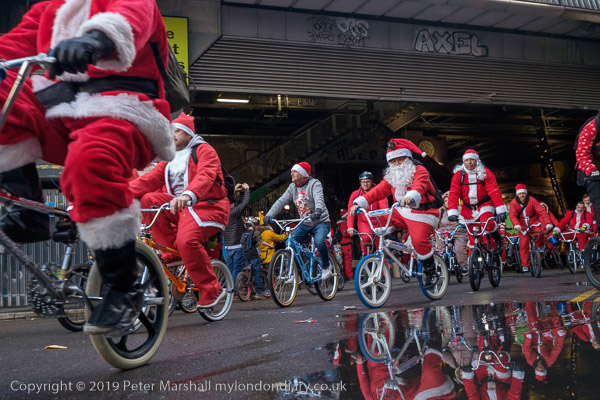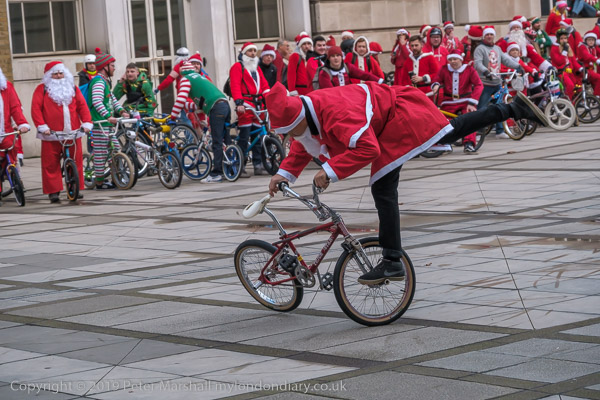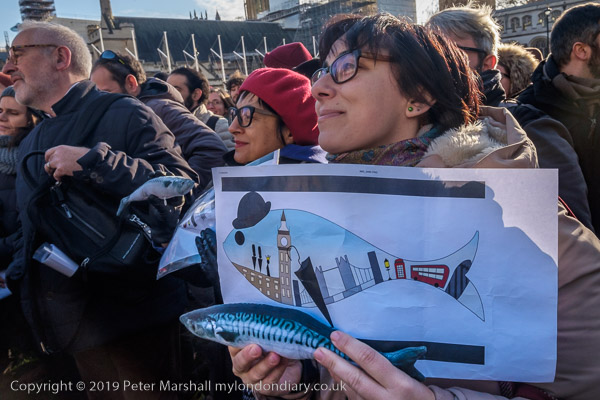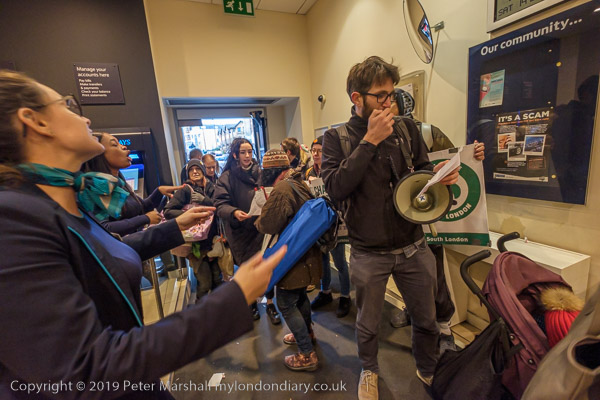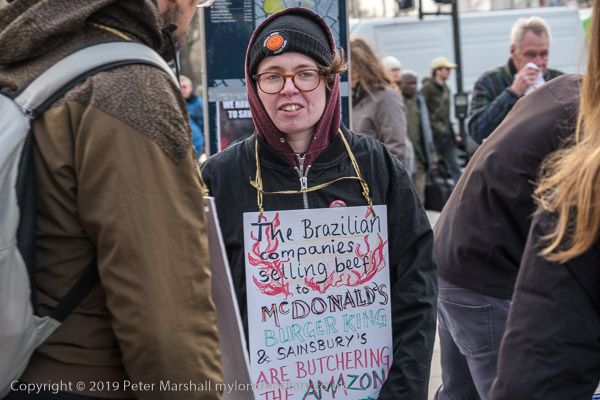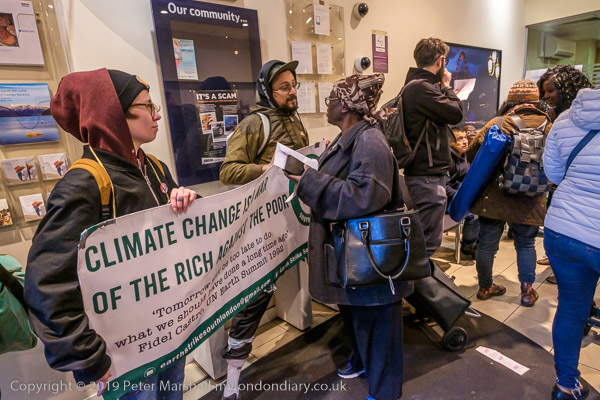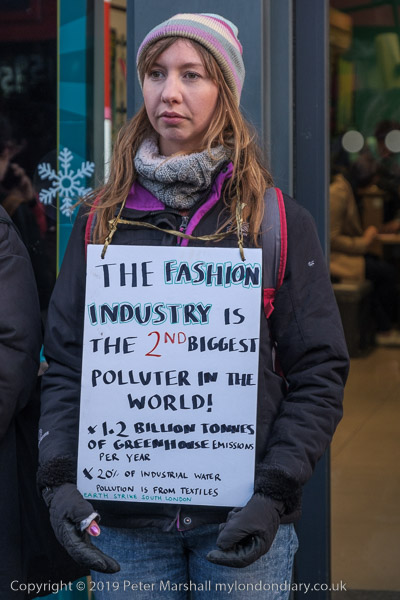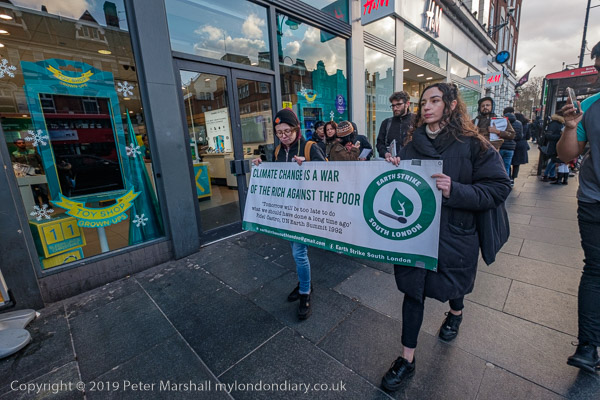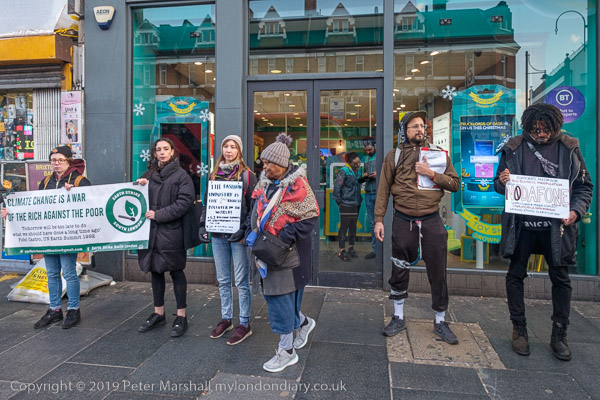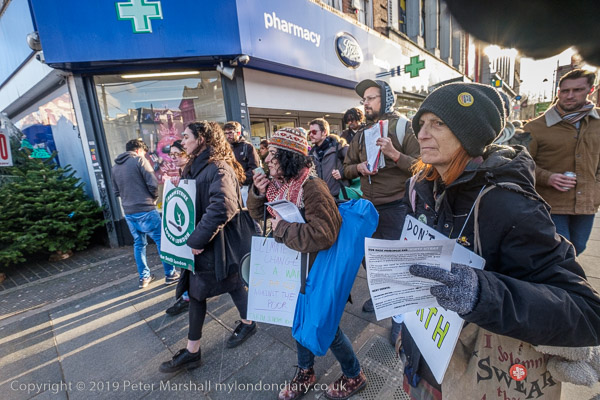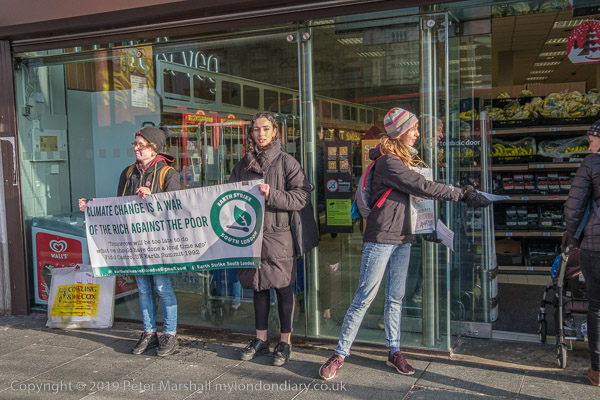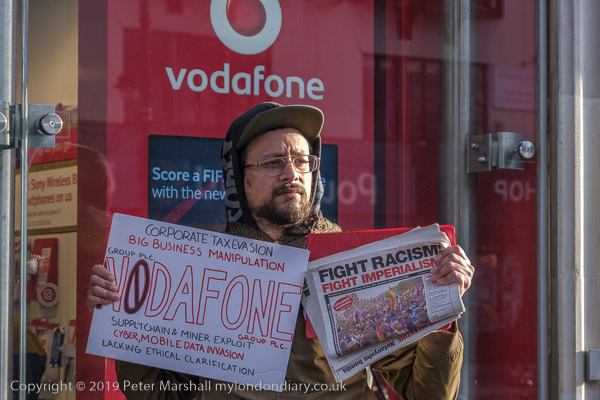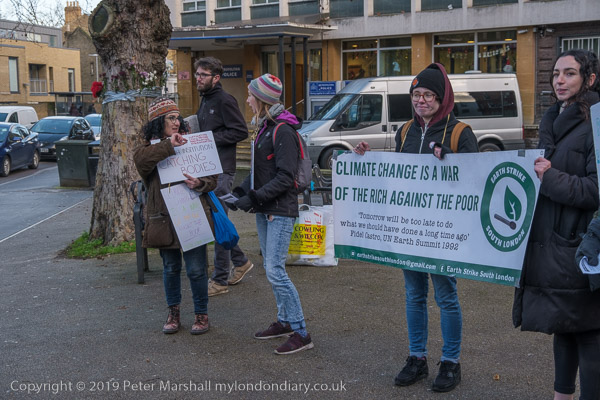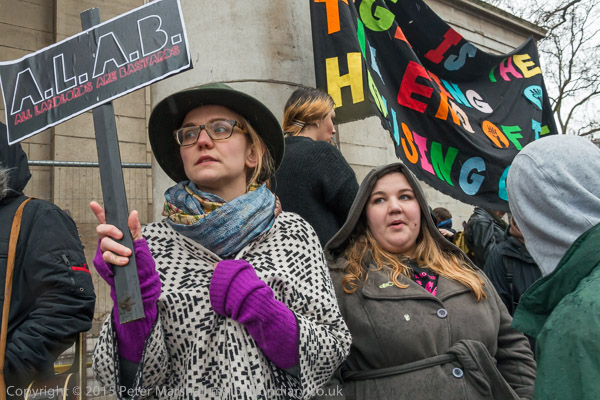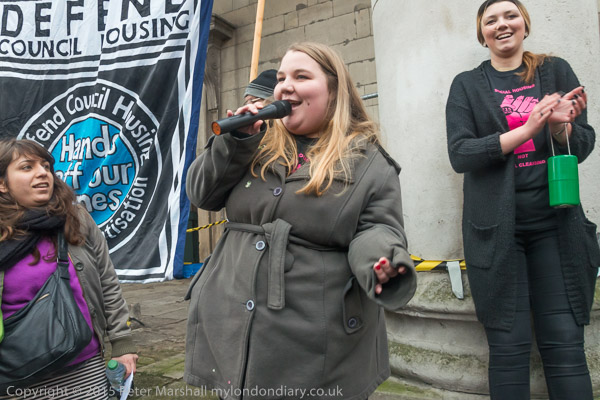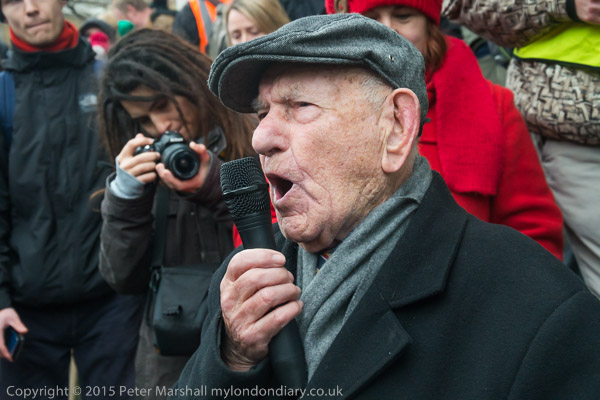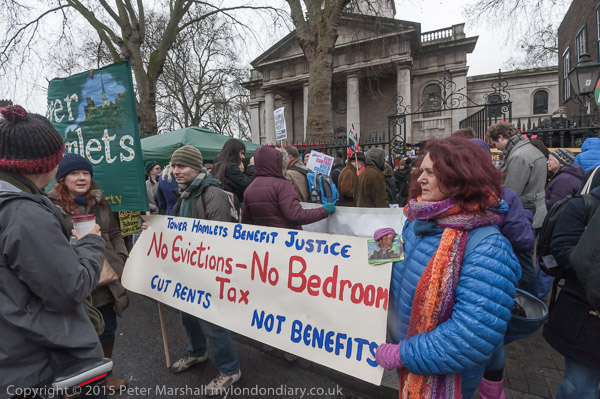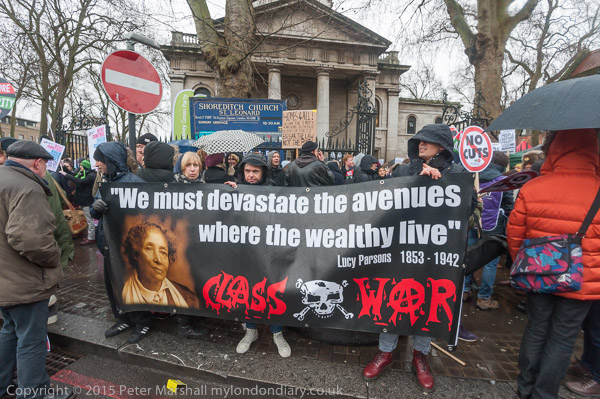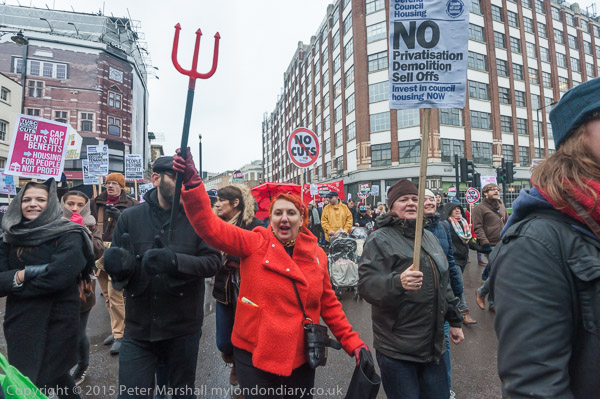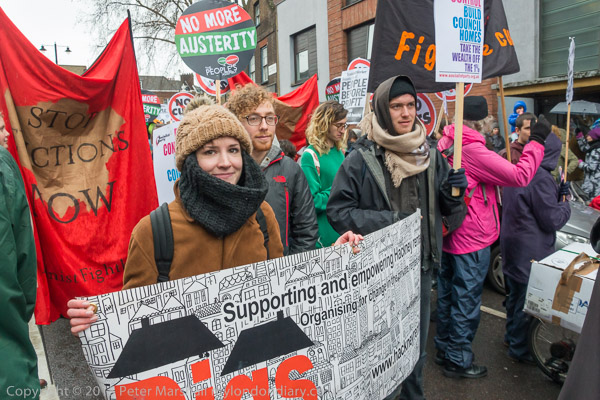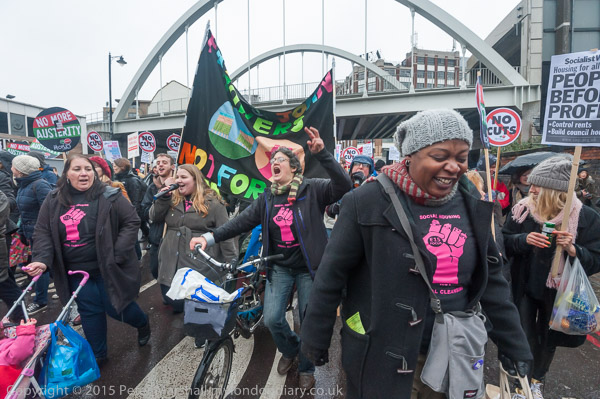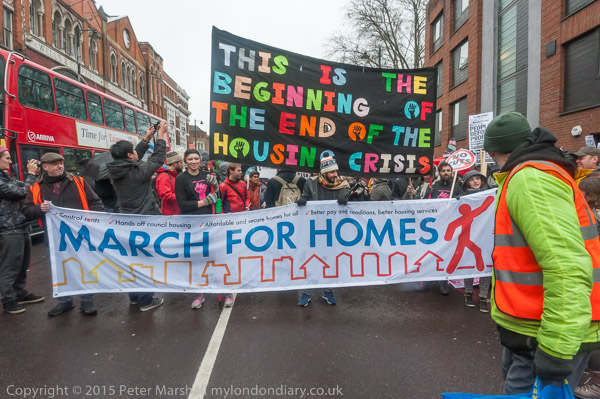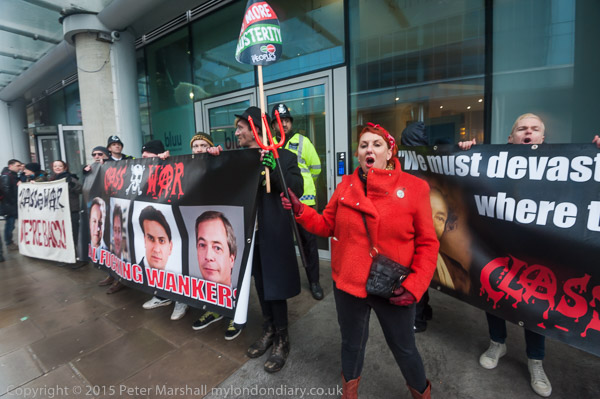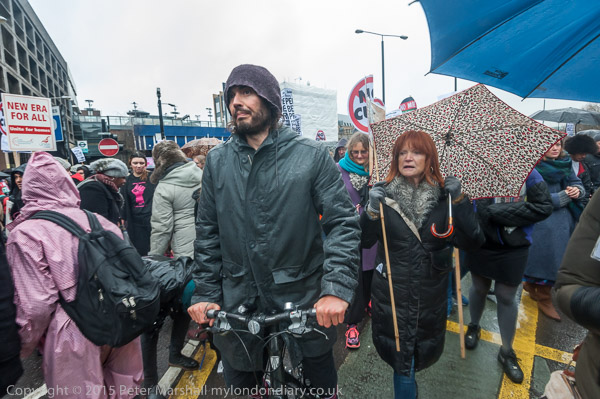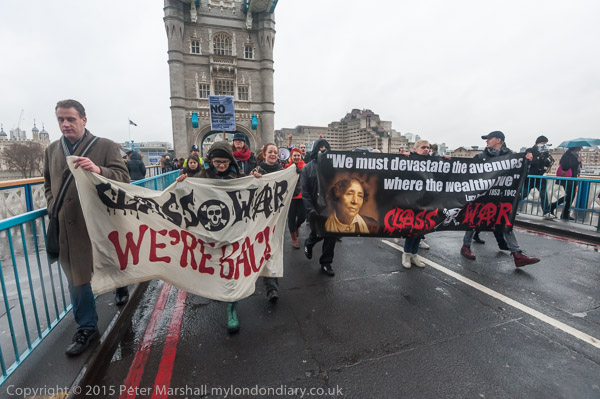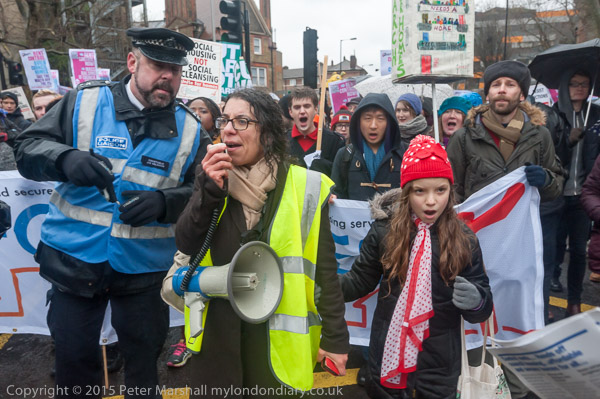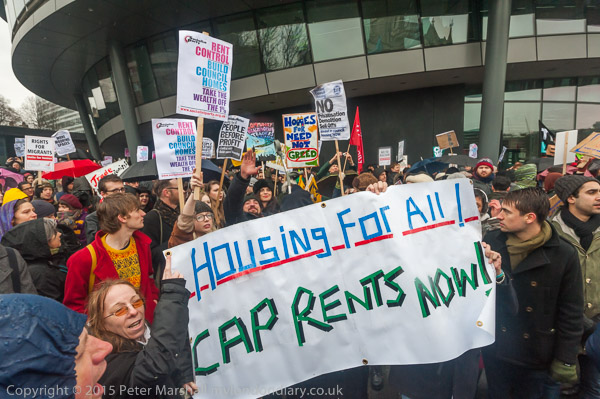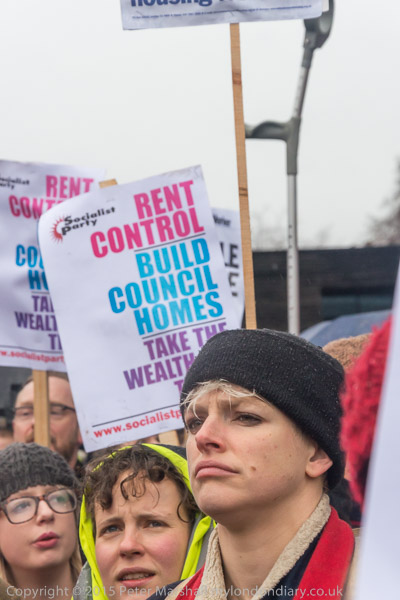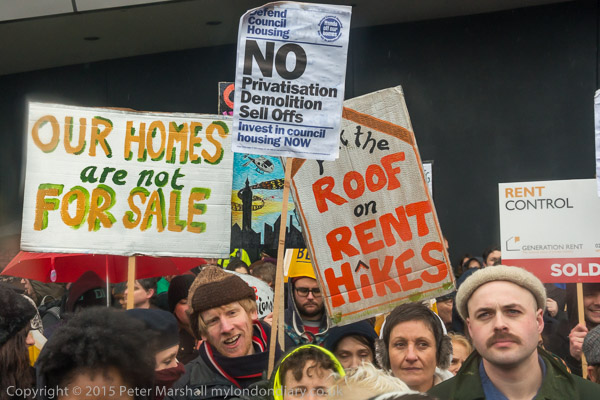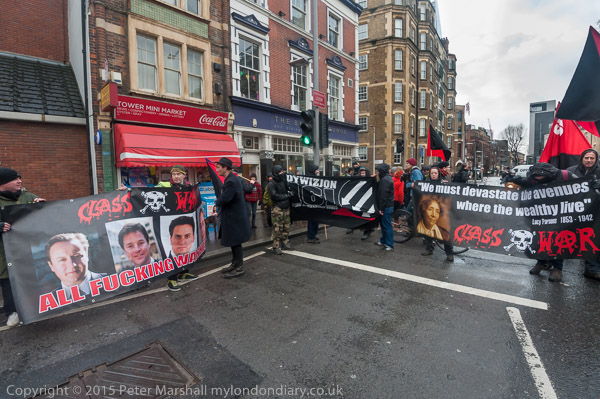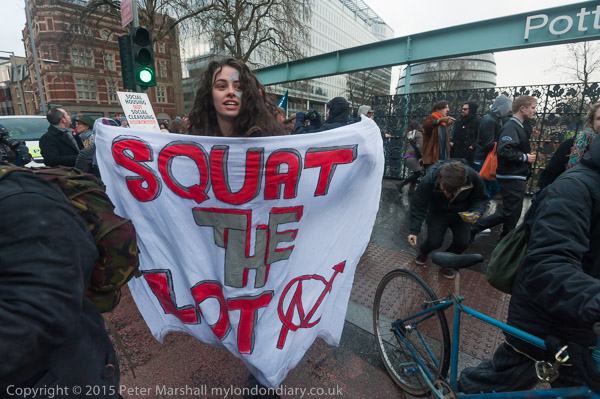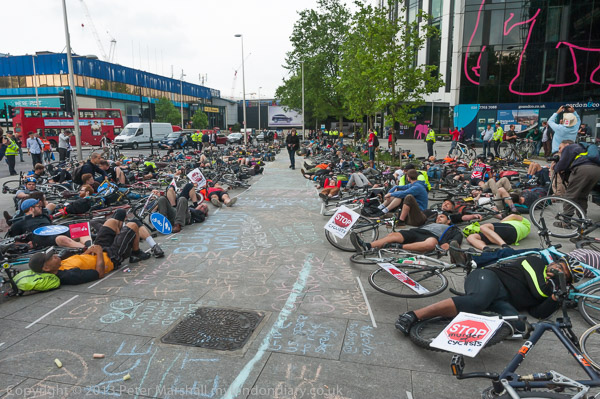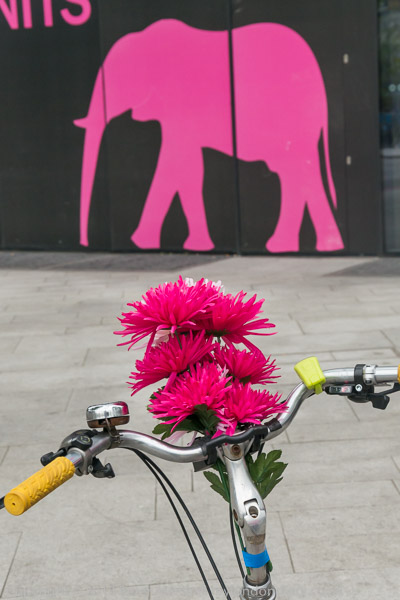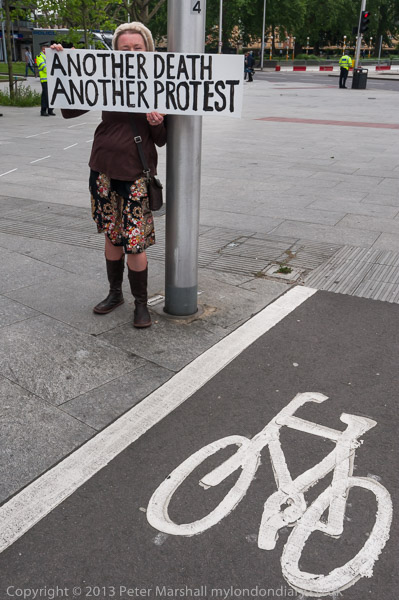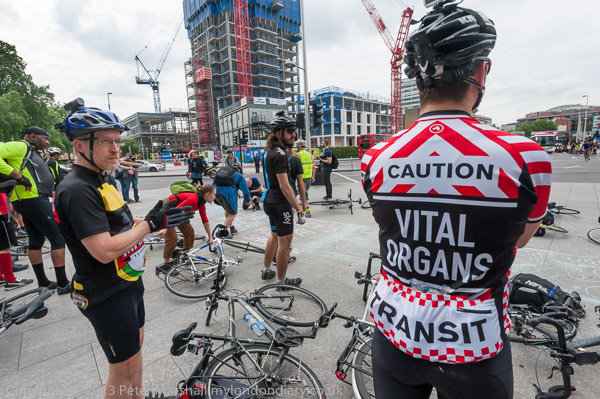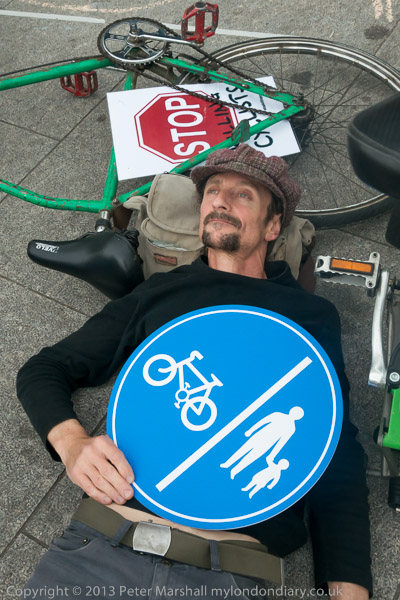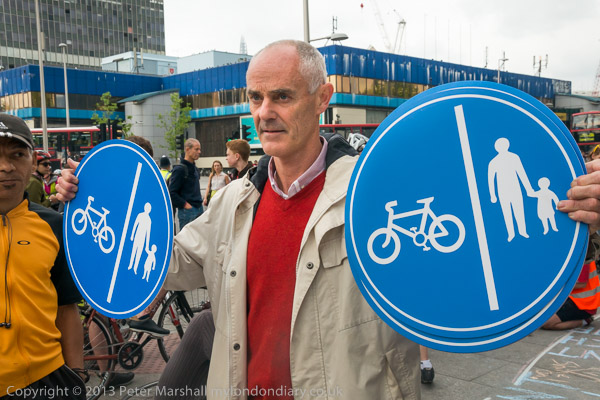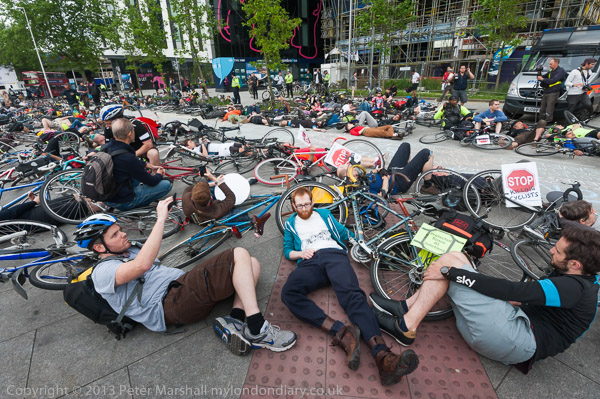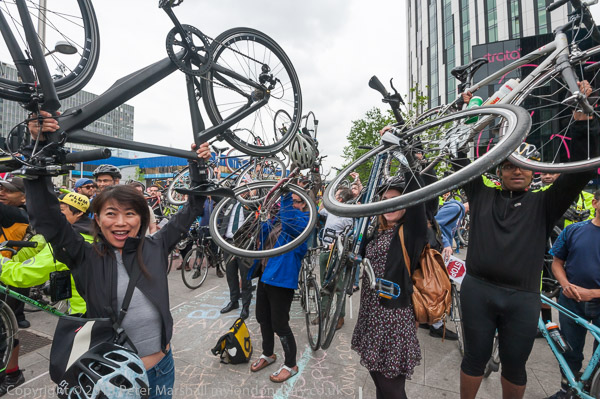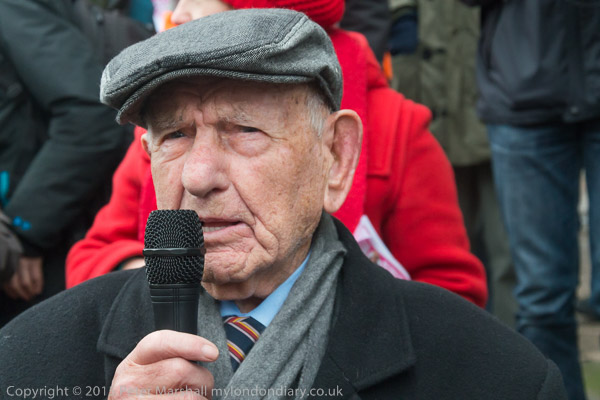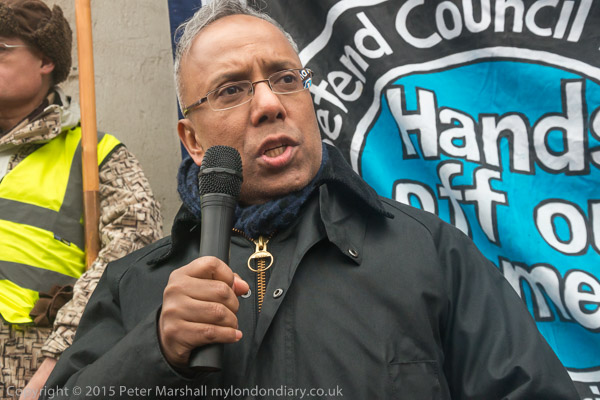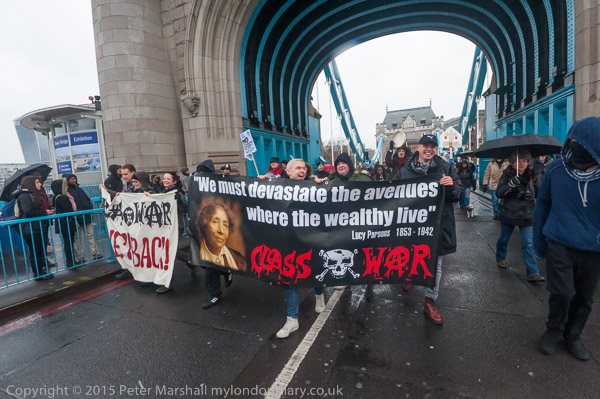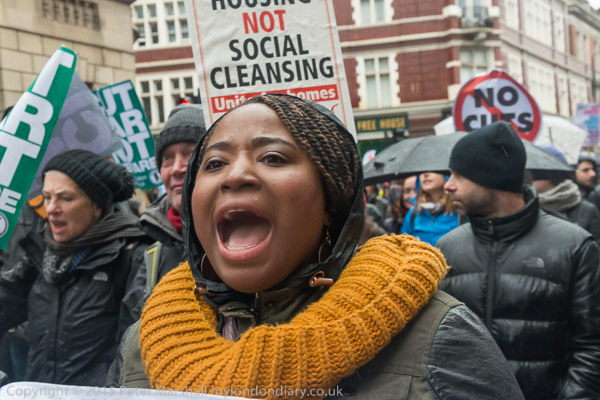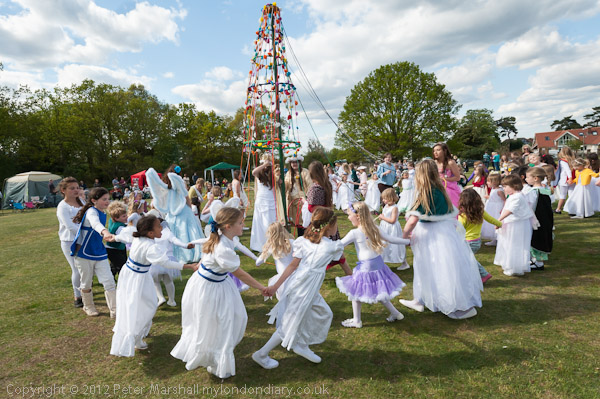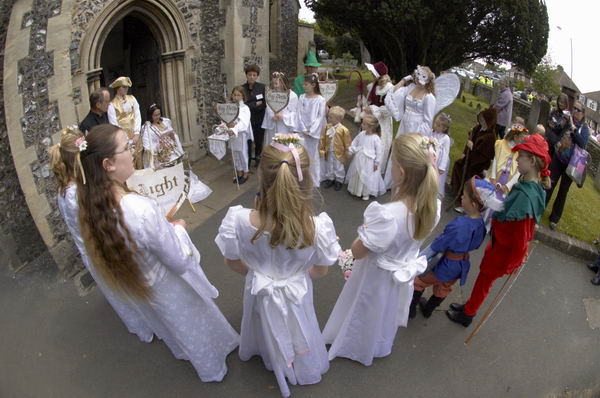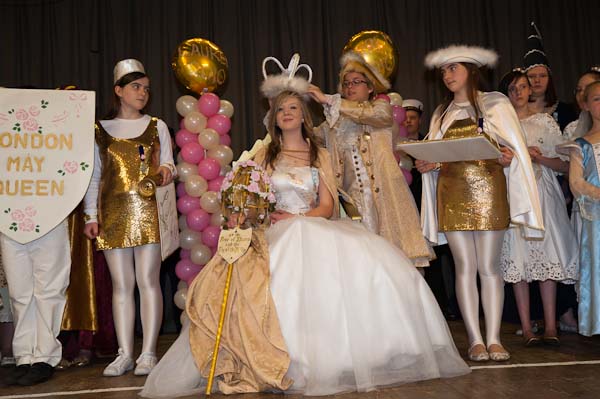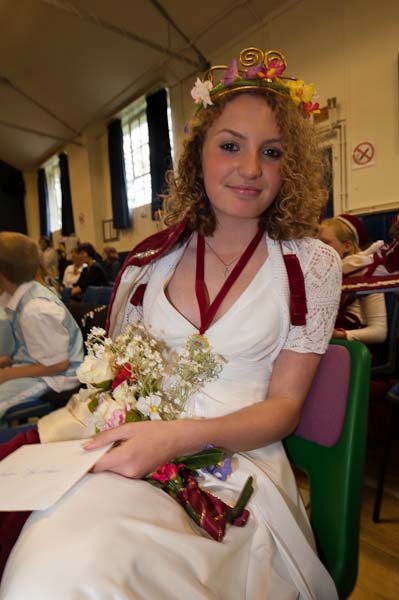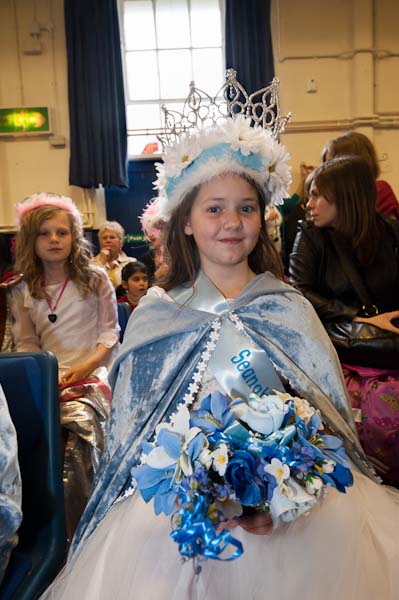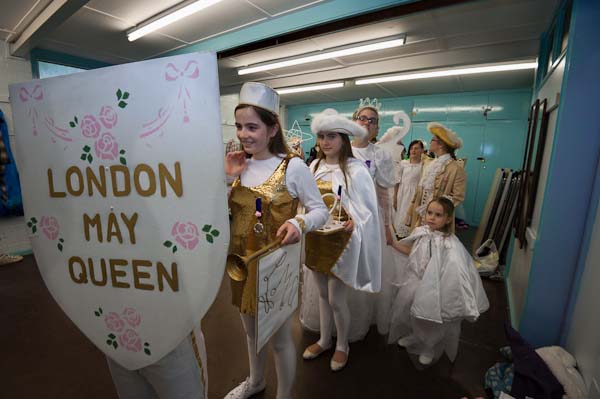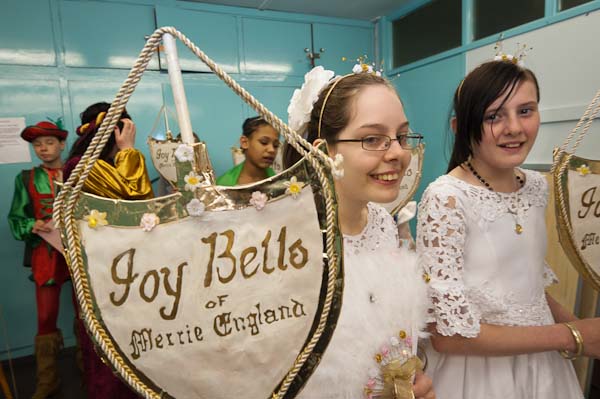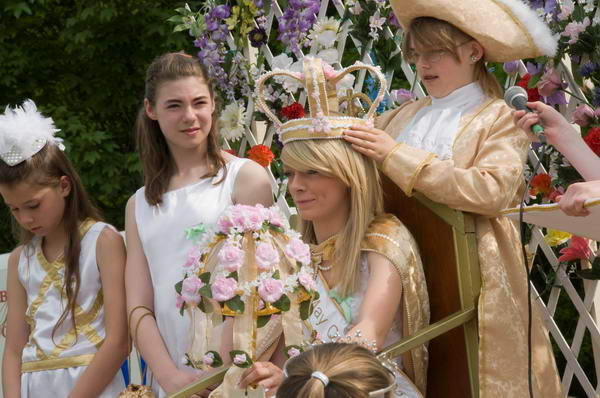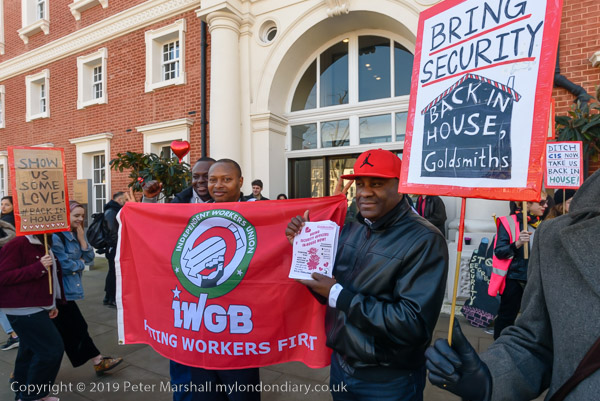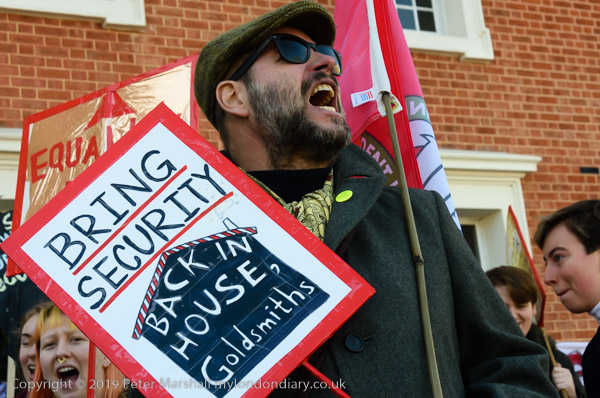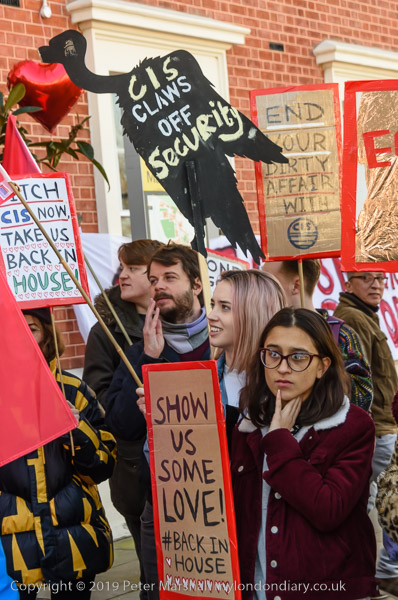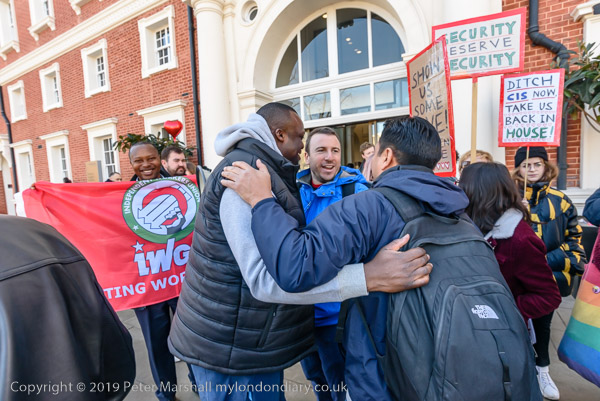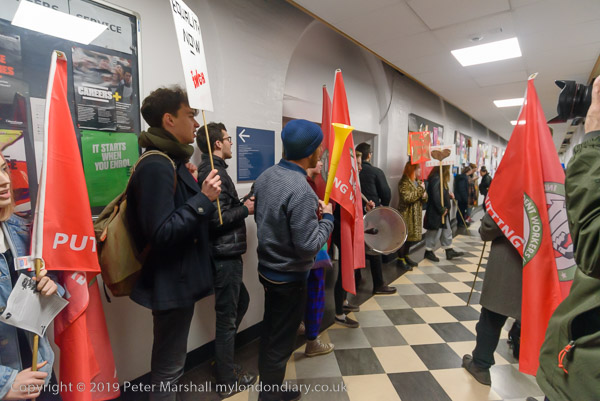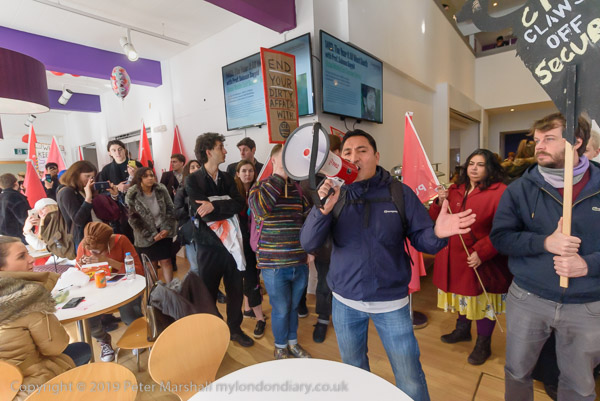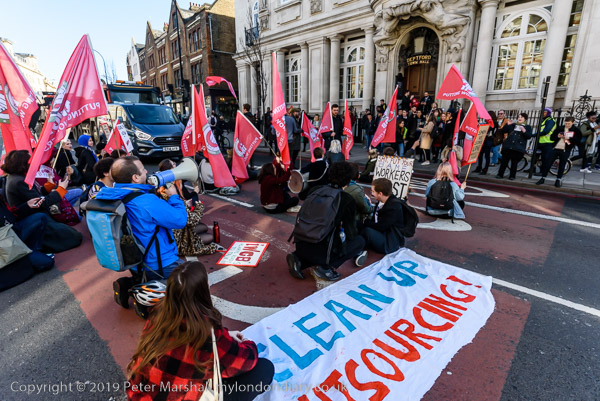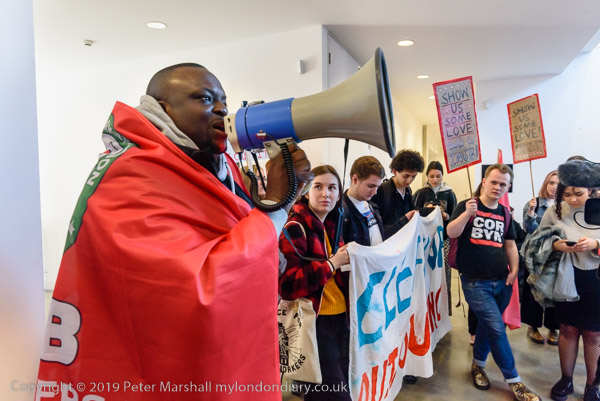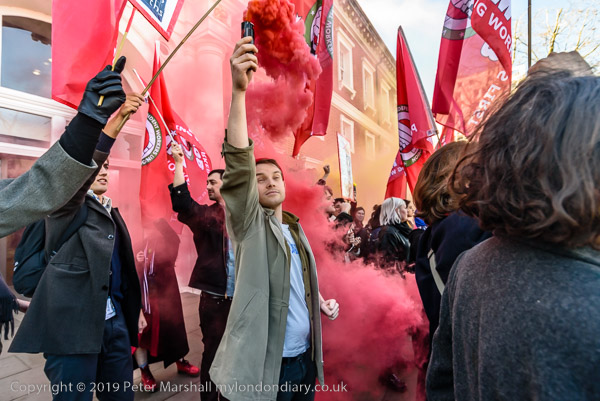Housing and Planning Bill March: On Saturday 30th January 2016 housing activists including some local councillors and housing activist groups mainly from South London including Class War marched from the Imperial War Museum to Downing St in a protest organised by Lambeth Housing Activists against the Housing and Planning Bill.
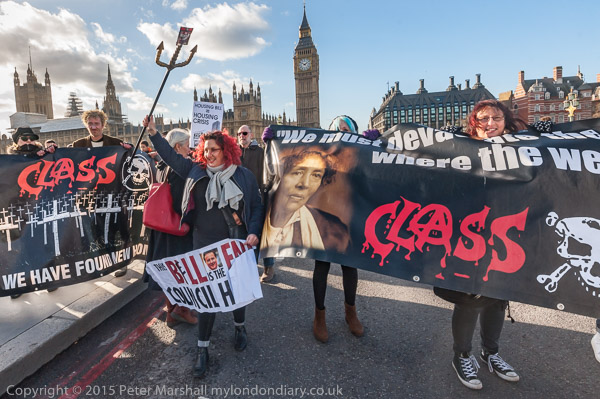
They say the bill will have a particularly large impact in London and greatly worsen the already acute housing crisis here.
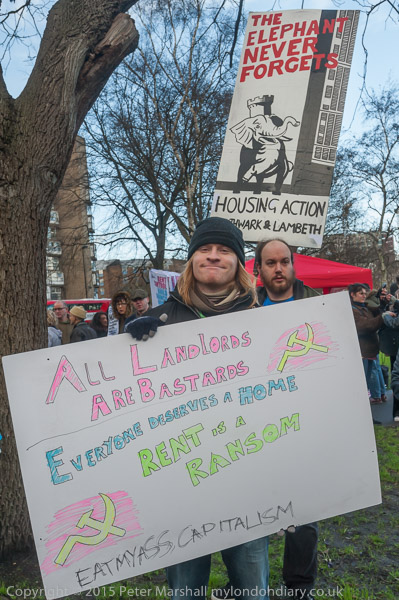
Speeches at the rally before the march in Geraldine Mary Harmsworth Park at the side of the Imperial War Museum by Green Party Leader Natalie Bennett and an number of housing activists including Simon Elmer of Architects for Social Housing were warmly applauded.
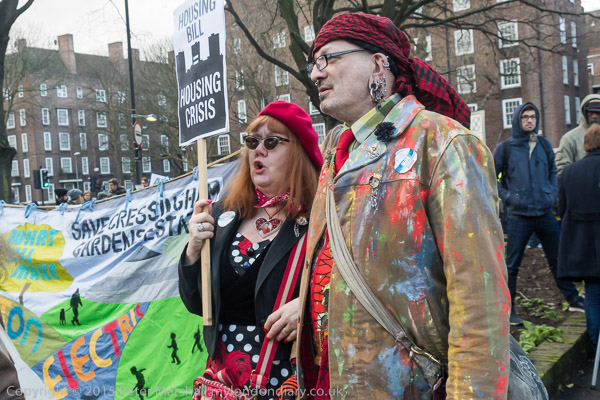
But there was one exception; when Southwark Council Cabinet Member for Housing Richard Livingstone the atmosphere changed, with boos and loud heckling from several people in the crowd including Elmer.
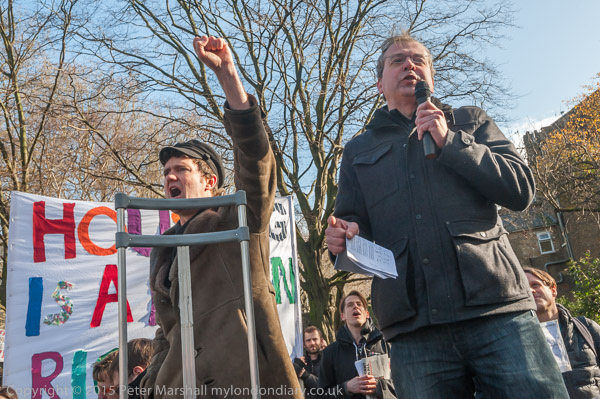
The arguments continued in the crowd after Livingstone had left the platform with Elmer pointing out the scandal over the demolition of the Heygate Estate and now the Aylesbury estate, where thousands of council homes have been demolished and few of the promises made by Southwark Council have been kept.
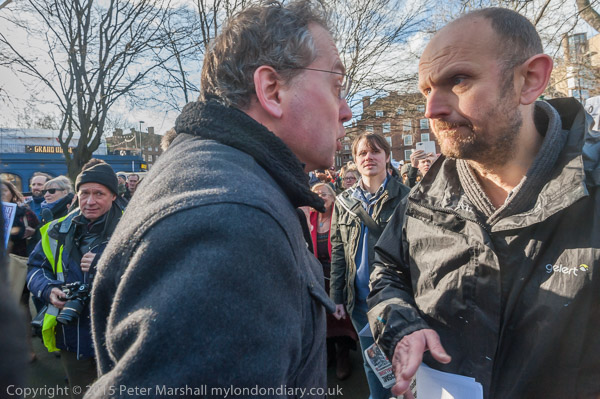
Financially and morally Heygate was a scandal, with the council making derisory offers of compensation to leaseholders, far less than the value of comparable properties in the area and a huge loss of social housing, while getting rid of a huge public asset at a fraction of its true value. And since it was something the council seemed determined to repeat, and it is not surprising that feelings ran high.
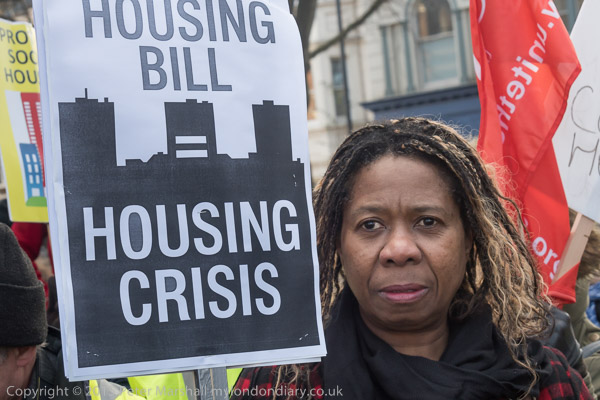
Rather to the surprise of many the march set off walking in the opposite direction to its final destination of Downing Street, and it soon became clear that we were on a tour of Lambeth rather than taking a direct route.
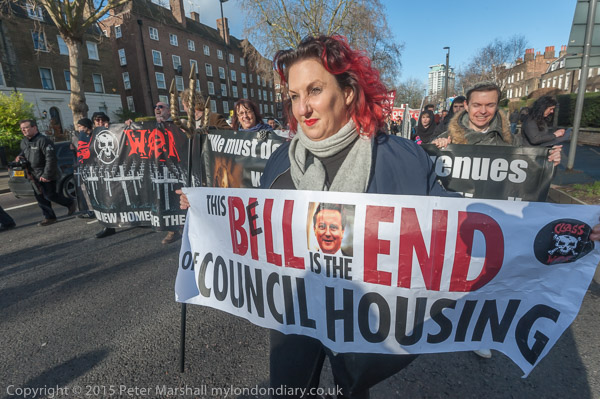
“Class War decided to liven things up a little, first by dancing along the street singing the ‘Lambeth Walk’ and then by rushing across the pavement towards a large estate agency.
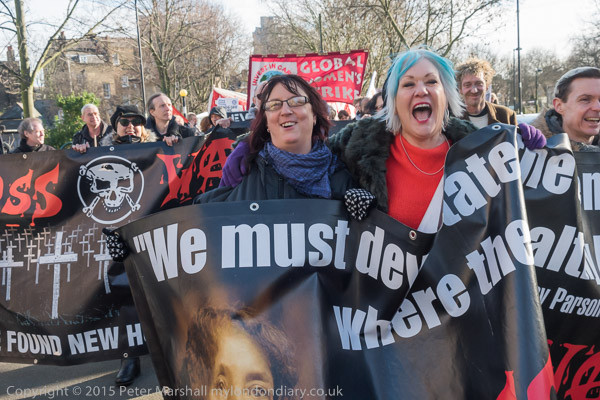
Police formed a line to stop them entering and they stood outside for some minutes with their banners – the field of crosses with the message ‘We have found new homes of for the rich’ and the Lucy Parsons banner with its quotation “We must devastate the avenues where the wealthy live” before rejoining the march.”

For much of the march Lisa Mackenzie who had stood at Class War’s candidate in the 2015 General Election against Iain Duncan Smith in Chingford stood in front of the banners waving a plastic trident with a small banner ‘This Bill is the end of Council Housing’ with its second message an image of David Cameron and the alternative text ‘Bell End’. At times she donned a face mask of Smith.
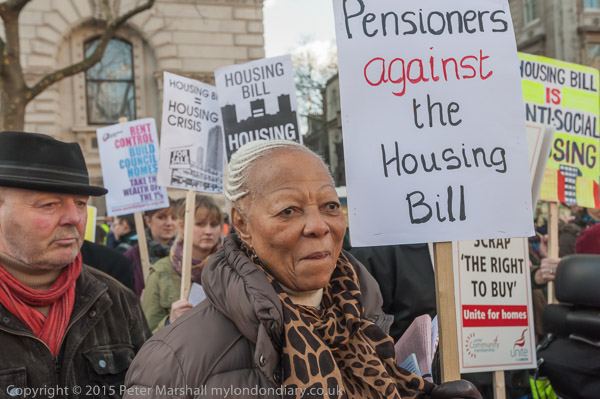
Eventually the march reached Downing Street where police tried to direct them to the opposite side of Whitehall, but the marchers walked past them and crossed back to protest outside the gates, blocking traffic on Whitehall.

Here there were several groups listening to speakers and a samba band playing. Eventually police persuaded most of them to leave the road and I left for home.
More pictures at Housing and Planning Bill March.
Flickr – Facebook – My London Diary – Hull Photos – Lea Valley – Paris
London’s Industrial Heritage – London Photos
All photographs on this page are copyright © Peter Marshall.
Contact me to buy prints or licence to reproduce.
